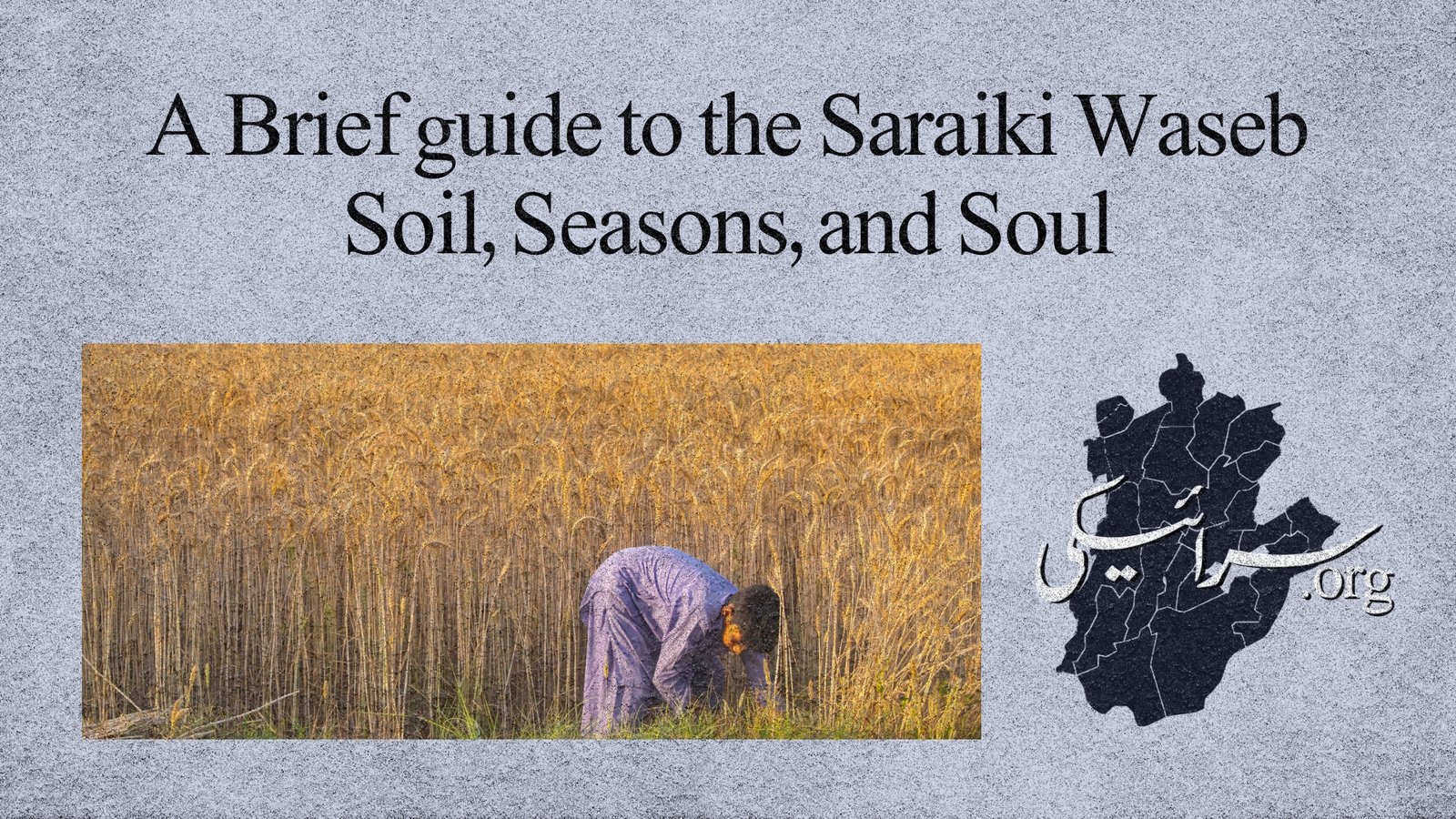This is an overview of the cultural, economic, and seasonal features of the Saraiki Waseb (region). It includes information on the distinct way of life followed by its people, covering key aspects such as seasons, economy, food, clothing, housing, and social behaviour.
Seasons in the Saraiki Region
The year in the Saraiki Waseb is divided into four main seasons:
- Spring (Chetr): March 14 to May 14. The region becomes green, and flowers start to bloom. It is often called the season of flowers.
- Summer (Hunala): Mid-May to mid-July. Temperatures rise significantly and heat is at its peak.
- Autumn (Patr Ker): Mid-September to November. The weather begins to cool down.
- Winter (Siyala): Mid-November to January. It is the coldest part of the year.
Economic Resources and Employment
The economic development of the Saraiki region has faced consistent challenges due to historical neglect and exploitation. Despite being rich in natural resources, the area has not seen proportional development.
- The Damani areas are rich in minerals such as salt, coal, alum, quartz, limestone, and Multani clay.
- The riverine areas provide fishing as an economic activity.
- The plains are heavily dependent on agriculture, with wheat, cotton, sugarcane, and rice as the main crops.
- Orchards also contribute significantly to the local economy.
- Thal area: Known for livestock, forestry, and vegetable cultivation.
- Cholistan: Livestock is the primary economic resource.
- Handicrafts include wooden products, pottery, and traditional items such as petrota, dola, pitcher, jhanuri, and sarahi.
Local Cuisine
Food in the Saraiki region is simple and adapted to the agricultural lifestyle.
- Common breads: Barley, millet, corn, wheat flour, and rice flour.
- Typical dishes: Sera, matanjin, sag, makhan, bartha, jode, bata.
- Beverages: Lassi and other dairy-based drinks are widely consumed.
Traditional Clothing
Clothing varies between rural and urban areas:
- Villages: Traditional dress includes dhoti chola and a cloth over the shoulders called safa.
- Cities: Most people wear shalwar qameez. Western clothing like pants and shirts is also seen.
Housing
Common types of traditional housing include:
- Mari
- Chowri
- Salh
- Safa
- Kotha
- Wasakh
- Bhana
- Manhi
- Pad Chhati
- Dab
These reflect local architectural practices suited to the regional climate and resources.
Social Characteristics
Saraiki society is known for respectful communication and cooperative behavior. The language is soft in tone and people address each other with courtesy


Leave a Reply